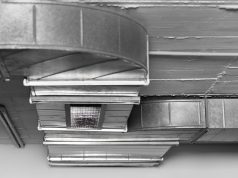
Jumping into a creative project like refurbing a piece of furniture is exciting. But if it’s your first time, that excitement might get in the way of the practical elements that can make the project the rewarding success you want.
If it’s your first time renovating a couch there are some common mistakes that can turn your refurb project into a different beast.
You can learn from experience or you can take a look below, where we explore the top sofa refurbishing mistakes, helping you get the successful makeover you planned.
Not Preparing
You’ve seen the new sofa in your head. So, you jump in.
One of the biggest mistakes you can make when refurbishing a sofa, or anything really, is overlooking proper preparation. Without it you could end up with shoddy work and certainly not the sofa you hoped for.
So, before you start any cutting or sticking, thoroughly clean your sofa, remove any loose upholstery and make any necessary repairs to the frame or springs. Like when you’re painting a wall, the foundation preparation is what creates a successful refurbishing project.
Choosing the Wrong Fabric
When choosing a fabric, consider your sofa’s intended use and the level of wear and tear it gets. For high-traffic areas, opt for durable, stain-resistant fabrics.
The pattern you like may look great but if it’s not up to the test, you’ll have wasted precious time and money, and feel disappointed after a few months of use.
Don’t forget to factor in your personal style and the overall aesthetics of your home. For the best results, strike a balance between the functionality and design.
The Importance of Quality Tools and Materials
Cutting corners when it comes to tools and materials is a common mistake in everything. Especially if you’re not sure that you’ll be doing projects on more than a one-off basis.
Poor quality tools can compromise the quality of your refurbishing project. Instead invest in the high-quality upholstery tools that are required for the job will make the process smoother and more fun. It will also result in a more professional finish, which you’ll rue if it’s missing.
Additionally, using inferior materials can lead to fitting problems and result in wear and tear sooner than you want. That means choosing quality foam, padding and nails to guarantee the longevity of your refurb. A tip here too… new sofa legs can make a huge difference to the appearance. Try a few out for size.
Don’t Ignore Those Structural Issues Either
Refurbishing isn’t just about giving your sofa a new coat, it’s also about addressing any underlying structural issues too. Ignoring problems with the sofa’s frame, springs or cushions can lead to discomfort and reduced durability and frankly, the sofa just won’t look as good as you want it to when you’re done.
Before you start any superficial work, thoroughly inspect your sofa for any structural issues and fix them as needed. This will save you from disappointment and create a comfortable seating experience.
Because of where they are, the cushions on a sofa are the first to show signs of wear and tear. If you need to replace them, accept you need to invest in new foam or padding before you start any covering. Well-cushioned seats can make a significant difference in both comfort and aesthetics.
Rushing Through the Reupholstery Process
Sofa refurbishing requires patience and attention to detail. Rushing through the process can result in sloppy workmanship and uneven upholstery. Overlooking finishing touches like piping, tufting, or buttoning can result in an unfinished and unrefined look.
Take your time when removing the old fabric and applying new. You want a polished and professional look. When you add decorative elements, pay attention to symmetry and spacing – it’s these small details that will elevate the overall appearance of your sofa.
Adequate Working Space and Safety
Avoid frustration and ensure you have enough room to work and spread out your materials and tools. A dedicated workspace can really help.
And safety should always be a top priority. Always wear safety gear, such as gloves and safety goggles to protect yourself from accidents and injuries. Additionally, create a well-ventilated area if you’re using adhesives or chemicals.
Final Thoughts
You want your DIY project to end in a beautifully refurbished sofa that enhances your living space’s comfort and aesthetics. And something to be proud of.
Prepare, invest in quality tools and materials, and take your time to achieve the best possible outcome. With a bit of careful planning that refurbed sofa could become a talking point for years to come.













